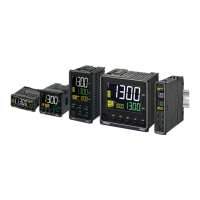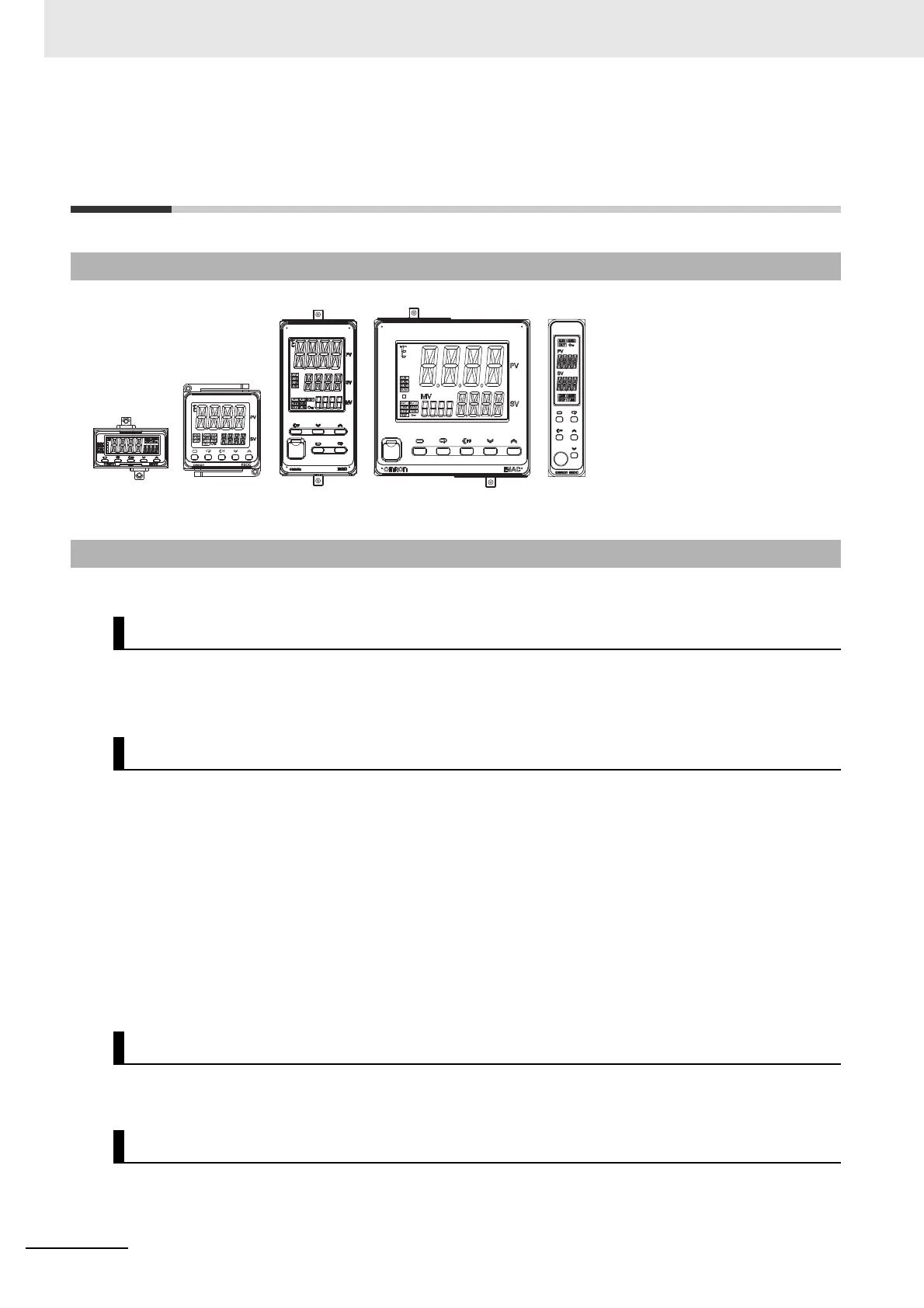1 Introduction
1 - 2
E5@C Digital Temperature Controllers User’s Manual (H174)
1-1 Appearance, Features, and
Functions of the E5@C
This section compares the features of the E5@C with the previous E5@N Digital Controllers.
Input sampling cycle: 50 ms
Control period: 0.1 s and 0.2 s have been added.
Integral/differential time unit: Setting in increments of 0.1 s has been added.
• Number of event inputs: Increased from 2 to 4 for the E5CC and from 4 to 6 for the E5EC/E5AC.
The E5DC has only 1 event input.
The E5GC or E5CC-B has 2 event inputs.
The E5EC-B has 6 event inputs.
* The E5DC-B does not support event inputs.
• Number of auxiliary outputs: Increased from 2 to 3 for the E5CC and from 3 to 4 for the E5EC/E5AC.
The E5DC, E5DC-B, E5CC-U, E5GC, or E5CC-B has 2 auxiliary
outputs.
The E5EC-B has 4 auxiliary outputs.
• Remote SP inputs: A remote SP input that treats the external analog signal at the set point
(SP) has been added.
Universal input: The input sensor can be selected freely from the following: Thermocouple, resis-
tance thermometer, ES1B Infrared Temperature Sensor, current, and voltage.
Digit shift: When setting the SP or other parameters, you can use a Shift Key (assigned to the PF
Key) to shift the digit that is being set to aid changing the set values.
1-1-1 Appearance
• A stylish design that gives a new
look to control panels.
• Large display characters and white
backlight for better visibility.
• A compact size to help downsize
control panels.
• Much faster sampling and greater
expandability than expected in this
class of Digital Controller.
• Even easier to use than previous
models.
1-1-2 Features
High-speed Control Capability
I/O Expandability
Universal Input Capability
Easier Numeric Inputs with a Digit Shift Key
E5CC, E5CC-U,
and E5CC-B
E5GC
E5EC and E5EC-B E5AC E5DC and
E5DC-B

